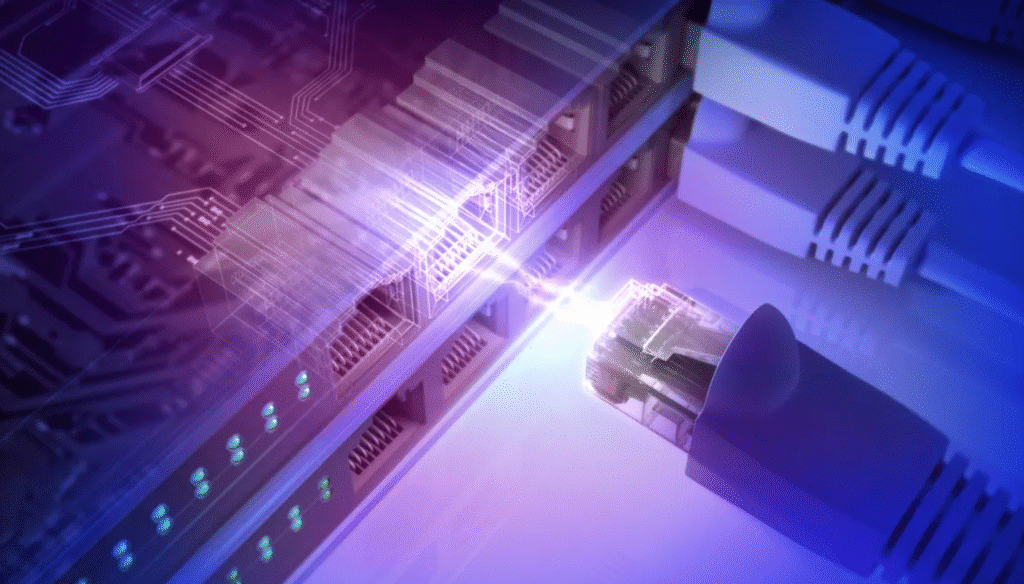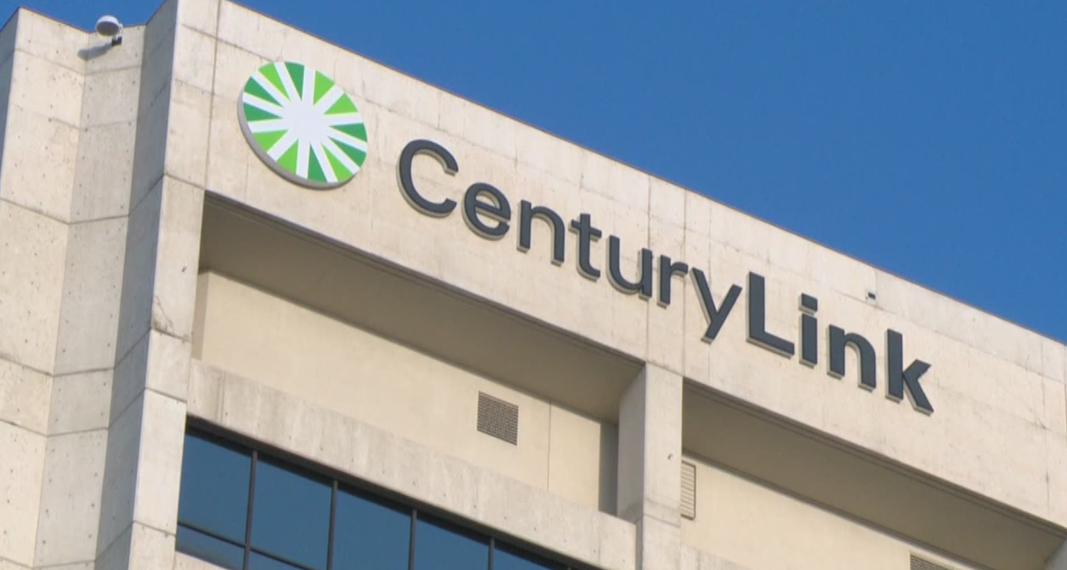Over 45,000 CenturyLink, Quantum Fiber, and Brightspeed users experienced a massive internet outage across the U.S., with Colorado hit hardest. Learn what caused the outage, user frustrations, DNS fixes, and the bigger issue with America’s broadband infrastructure.

A Digital Blackout Hits the U.S.
On June 19, 2025, a massive internet outage struck CenturyLink and its associated brands, Quantum Fiber and Brightspeed. The disruption was particularly devastating in Colorado, especially in cities like Denver and Colorado Springs, where Quantum Fiber is a major provider.
Outage-tracking platforms such as DownDetector lit up with complaints. Over 45,000 users reported issues nationwide, with more than 35,000 CenturyLink customers, 17,000 Quantum Fiber users, and 3,000 Brightspeed subscribers affected.
The two-and-a-half-hour disruption exposed serious weaknesses in America’s broadband infrastructure — and reignited customer frustrations that have been brewing for years.
Scope and Duration of the Outage
The internet blackout began in the late morning of June 19 and lasted approximately 2 hours and 33 minutes. Though service was largely restored by mid-afternoon, the scale of the disruption was massive:
- CenturyLink: 35,000+ outage reports
- Quantum Fiber: 17,000+ outage reports
- Brightspeed: 3,000+ outage reports
The outage was not limited to Colorado. Reports flooded in from across the U.S., including Arizona, Iowa, Washington, Florida, Georgia, Texas, Michigan, California, and more.
What Went Wrong? DNS Server Failure Identified
Though no official cause was provided immediately, technical communities quickly identified the issue as a DNS server failure. DNS (Domain Name System) servers are responsible for routing web traffic. When they go down, users cannot access websites—even though their internet connection may be technically active.

Temporary DNS Fix for Affected Users
Many tech-savvy users shared quick fixes online that helped restore internet access during the outage:
How to Fix (Temporary DNS Change):
- Step 1: Open network settings on your PC, Mac, or router
- Step 2: Replace DNS with:
- Google DNS: 8.8.8.8 / 8.8.4.4
- Cloudflare DNS: 1.1.1.1 / 1.0.0.1
- Step 3: Restart your device or router
This workaround helped thousands get back online before official service restoration.
Colorado Hit Hardest: Quantum Fiber’s Central Role
Colorado was particularly impacted due to Quantum Fiber’s dominance in the region. As a subsidiary of Lumen Technologies (which also operates CenturyLink), Quantum Fiber serves hundreds of thousands of homes and small businesses across Colorado.
Cities like Denver and Colorado Springs, where Quantum Fiber has been expanding ultra-fast broadband services, saw large-scale reports of connectivity loss.
On Reddit and Twitter, Denver-based users posted screenshots, traceroutes, and DNS workaround tips. One Reddit user humorously noted that even CenturyLink’s own website wouldn’t load on mobile data.

No Statement, No Support: Customer Frustration Boils Over
Adding fuel to the fire was the silence from the companies involved. As of June 20 morning, none of the providers—CenturyLink, Quantum Fiber, or Brightspeed—had issued any detailed explanation.
CenturyLink’s support accounts only responded with generic messages like:
“We are aware of a potential disruption and are working to resolve it.”
This lack of transparency left users relying on community forums and tech blogs for updates. For a nation so dependent on digital services for work, school, healthcare, and communication, the radio silence was unacceptable.
Social Media Reactions: Humor, Frustration, and DIY Fixes
🔹 User Outcry
Twitter and Reddit lit up with posts like:
“I’m working in 100°F heat and I can’t even cool down with a Netflix binge. Thanks, CenturyLink!”
Another user said:
“It’s 2025 and a DNS issue still takes down half the country.”
The Internet outage from CenturyLink has been going on for long enough that they're not even providing a projected time when it'll be back. Lol.
— Aaron Blount (@ATEOutdoors) June 13, 2025
This is beyond ridiculous now. pic.twitter.com/CNbNG1r9Ms
🔹 Tech Community to the Rescue
A 14-year-old Reddit user even posted detailed instructions to override DNS settings and restore service, helping thousands who were otherwise stuck.
Long-Term Reliability Issues: Customers Speak Out
The June 19 outage wasn’t an isolated event — just the most visible. Many customers, particularly in rural or underserved areas, have dealt with ongoing problems for months, even years.
Real Stories from the Field
- Karen Kurt, a retired teacher in Sheridan, Oregon, had no internet service for over 11 weeks. Despite scheduling repair appointments, CenturyLink never showed up. She had to rely on a public library to help her grandkids with schoolwork.
- David Stromberg, a resident of Bellevue, Washington, had his phone line down for over four months. Multiple service requests were ignored—until a news outlet got involved.
In both cases, service was mysteriously restored within hours after public exposure.
Infrastructure Issues: Not Enough Technicians
One Colorado user, John, shared that there are only five techs in the Boulder County region who understand copper wire infrastructure. As Lumen shifts its focus to fiber, copper-based systems are being neglected, leaving rural customers like John in limbo.
CenturyLink’s response?
“We ran a check. Everything looks good on our end.”
But John’s story revealed otherwise: his outage was due to a bad modem and a broken dial-tone card, not a faulty cable as claimed by multiple phone reps.

Historical Failures: CenturyLink’s Troubled Track Record
This isn’t CenturyLink’s first stumble. In August 2020, a BGP routing error at CenturyLink led to an outage that affected Amazon, Cloudflare, Discord, and more.
That event, like this one, was also attributed to technical mismanagement—not cyberattacks. Yet the lack of transparency and delayed response continues to erode trust.
Business Impact: Productivity Lost, Money Wasted
For small business owners in Colorado, the outage couldn’t have come at a worse time. Many reported loss of revenue, missed meetings, and angry clients.
Remote workers, already dependent on high-speed fiber, had to switch to mobile data or drive to cafes and libraries for basic access.
The June 19 blackout reminded everyone that high-speed internet is now a utility, not a luxury.
Public Broadband: The Untapped Solution?
Many municipalities have considered building their own public broadband networks, especially in areas underserved by legacy ISPs. But CenturyLink and other telecom giants have lobbied hard against such moves, citing “unfair competition.”
In May 2024, advocates reported a surge in opposition from “dark money” groups that block local governments from creating more equitable digital access.
The Bigger Picture: A Fragile Digital Backbone
The outage showed just how vulnerable America’s internet infrastructure remains. Centralized DNS servers, aging copper lines, a shortage of trained technicians, and poor customer support create the perfect storm.
With acquisitions like AT&T’s $5.75 billion deal to buy Quantum Fiber’s parent company, change may come—but whether it improves or worsens service remains to be seen.
What You Can Do to Stay Prepared
If you rely on internet service for work, education, or healthcare, consider these steps:
✅ Keep a mobile backup data plan
A prepaid hotspot or tethering plan can save the day.
✅ Enable DNS override
Have Google or Cloudflare DNS settings pre-configured as a backup.
✅ Use an outage tracker
Websites like DownDetector and IsItDownRightNow offer real-time data.
✅ Follow provider updates on social media
While official sites may go down, X (formerly Twitter) accounts often share live information.
The June 19 CenturyLink-Quantum Fiber-Brightspeed outage was a wake-up call for U.S. internet users. It exposed a fragile network infrastructure, poor customer service response, and a lack of accountability from major ISPs.
As reliance on broadband grows in every aspect of modern life, so too must the urgency to fix and future-proof our systems. For now, users are left with DIY fixes, long wait times, and the hope that maybe — just maybe — someone at CenturyLink is listening.
FAQs
Q1: What caused the June 19 CenturyLink outage?
The issue was attributed to a DNS server failure, although the company did not issue a full technical breakdown immediately.
Q2: How many users were affected?
Over 45,000 users: 35,000+ CenturyLink, 17,000+ Quantum Fiber, and 3,000+ Brightspeed customers.
Q3: Was it a cyberattack?
There is no confirmed evidence of a cyberattack. Technical signs pointed to a misconfigured DNS server.
Q4: Is there compensation for affected users?
Users are advised to contact their providers directly for potential bill credits or service adjustments.
Q5: What can I do to avoid future outages?
Use alternate DNS settings, have a mobile data backup, and stay updated via social media or outage-tracking sites.
Q6: What is CenturyLink?
CenturyLink is a U.S.-based telecommunications provider offering internet, network security, cloud, and managed services. It operates over both fiber and copper networks. Still using CenturyLink for your home internet? You’re not alone!
Also Read :
184 Million Passwords Leaked: Google, Microsoft, Facebook Among Biggest Victims
Who Is Mark Walter? Meet the Billionaire Behind the $10 Billion LA Lakers Deal with the Buss Family
Elon Musk’s SpaceX Starship-36 Goes Up in Flames-Setback or Setup for Success?

